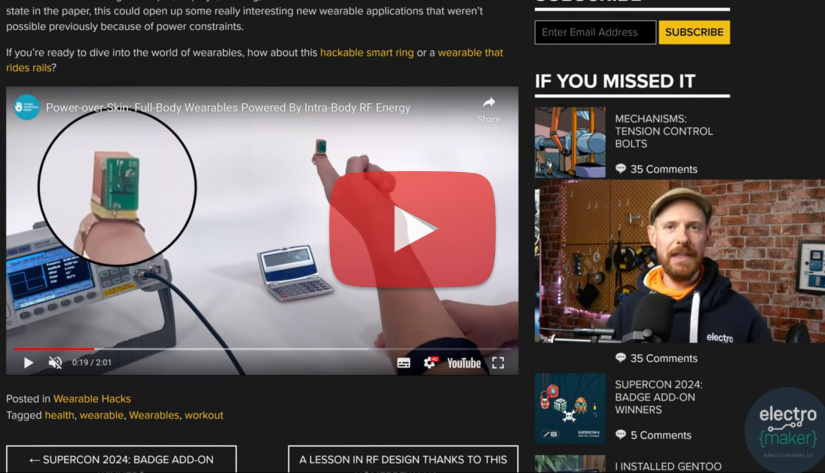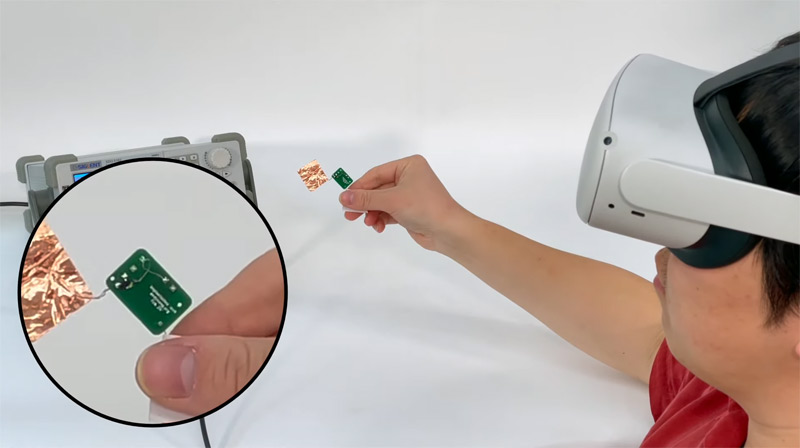Power Over Skin: A New Era of Wearable Device Charging
Wearable devices face a constant challenge when it comes to power solutions, often relying on small batteries or complex energy harvesting methods. Recently, the Future Interfaces Group at Carnegie Mellon University introduced an innovative method called “power over skin”, which could redefine how wearables are powered. This technique enables the transfer of power across the skin's surface, presenting a promising alternative to traditional batteries and opening doors for more compact and efficient wearable technology.

Watch Ian talk about Future Interfaces Group's research into Power Over Skin in this episode of The Electromaker Show
Understanding Power Over Skin Technology
Power over skin is a breakthrough concept that allows energy to be transmitted along the surface of the skin, providing power to wearable devices without internal batteries. This method, developed by Carnegie Mellon University’s Future Interfaces Group, uses capacitive coupling at 40 MHz RF energy to carry power through skin safely and efficiently.
Unlike traditional methods that rely on rechargeable batteries or ambient energy harvesting, this approach allows for continuous power transfer directly from a source on the body. For instance, a small power unit on the upper arm can send energy to a ring or other devices, creating a seamless and battery-free user experience.
In demonstration, researchers have shown this method in action:
- A ring with a joystick powered solely by skin-transmitted energy.
- A calculator operating without its own battery source, running through contact with a user’s skin.
These examples showcase the potential for new, compact wearable devices that don’t require onboard batteries.
Applications and Benefits of Power Over Skin
Power over skin technology could transform the design and function of wearables, from fitness trackers to medical sensors. By eliminating the need for internal batteries, devices can be smaller, lighter, and designed for continuous, low-maintenance use.
Real-World Applications
- Wearable health monitors that provide continuous data without frequent recharging.
- Consumer devices like rings or smart patches that are lighter and less intrusive.
Research Demonstrations
The research group demonstrated several real-world scenarios:
- A VR headset transmitting power through skin to reach fingertips, showcasing wearable interactivity.
- A phone-in-pocket setup where energy runs over the skin, powering small devices effortlessly.

Early experiments highlight the practical potential of this technology, as shown in the Hackaday article, where additional use cases and technical details are available.
Challenges and Future Potential of Power Over Skin Technology
While promising, power over skin technology is still in the experimental phase, with some limitations and challenges to address. The current prototypes, like the joystick ring, are bulky and not yet suitable for everyday use. Future improvements will aim to make these devices sleeker and more practical.
Health and Safety Considerations
Some concerns have been raised regarding the safety of continuous power transmission across the skin. Although no adverse effects have been observed in early testing, further research will be crucial to ensure safe, long-term use in everyday settings.
Future Development
As research continues, power over skin could become a mainstream option for wearables, potentially transforming the wearable tech market. Innovations may lead to smaller, more comfortable designs that provide continuous power for applications in healthcare, fitness, and beyond.
Did you enjoy this article?
Make sure you subscribe to The Electromaker Show for similar content and subscribe to our monthly newsletter!













































Leave your feedback...